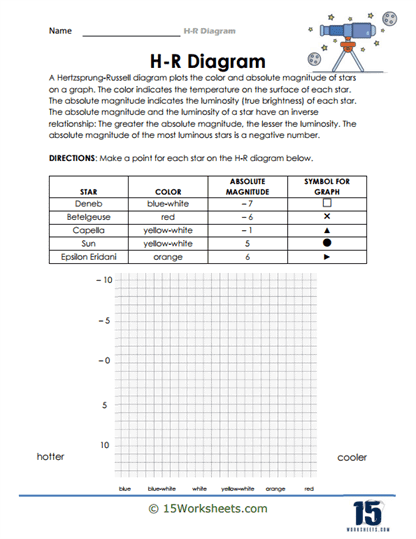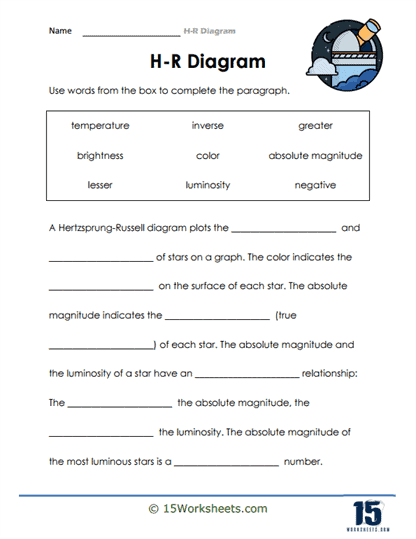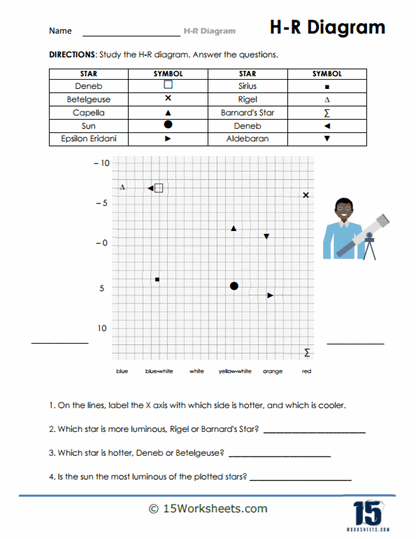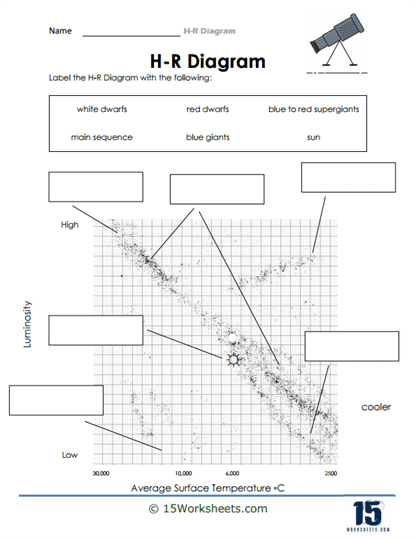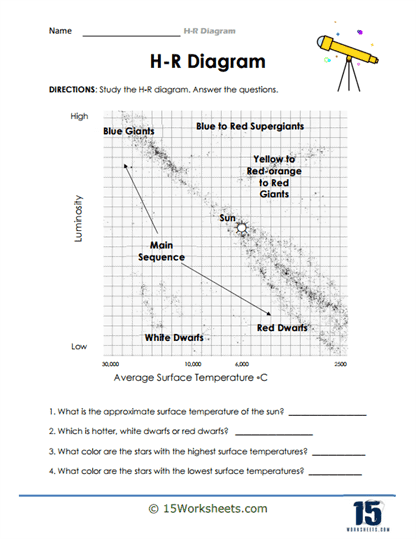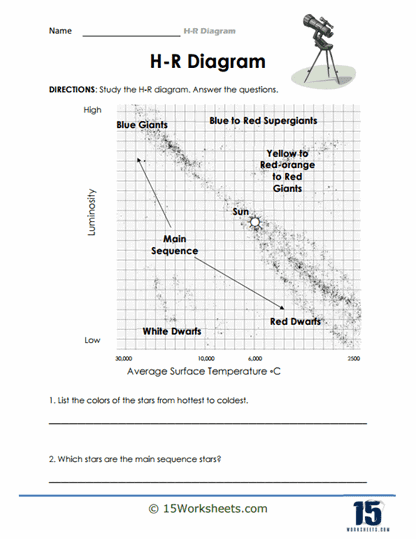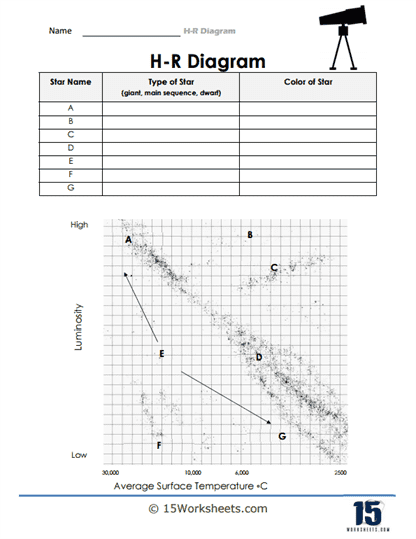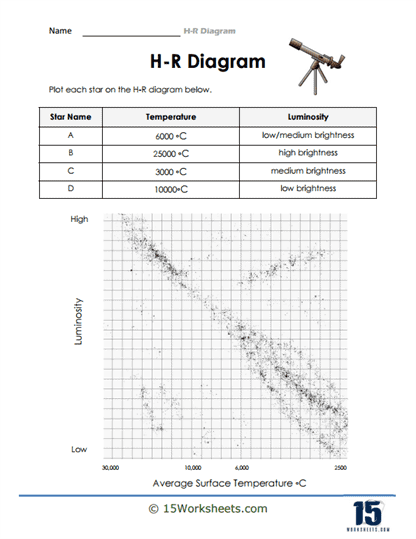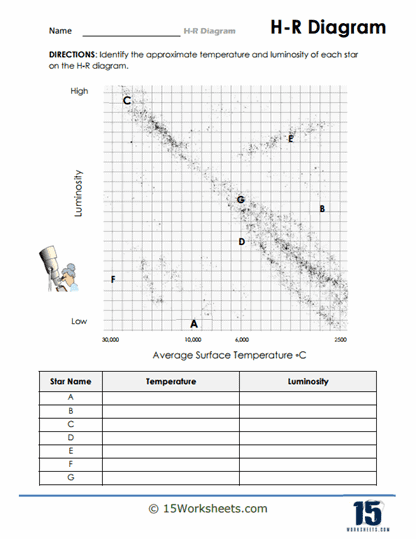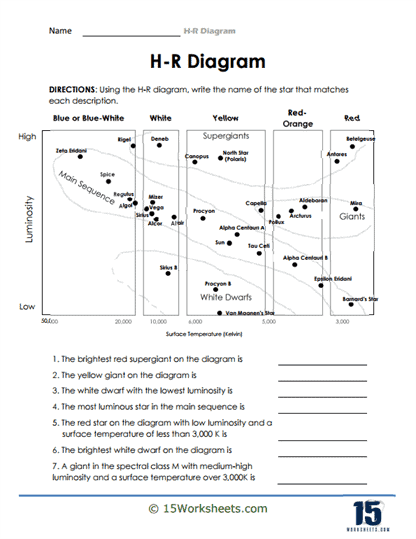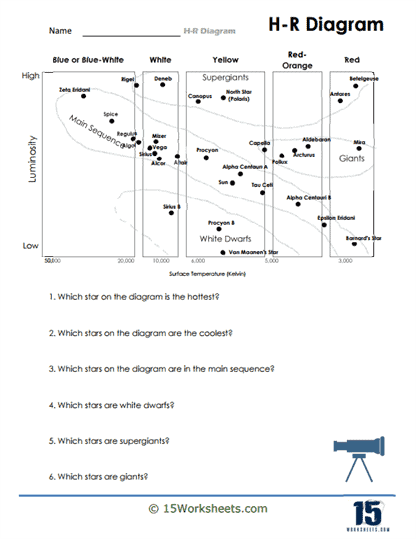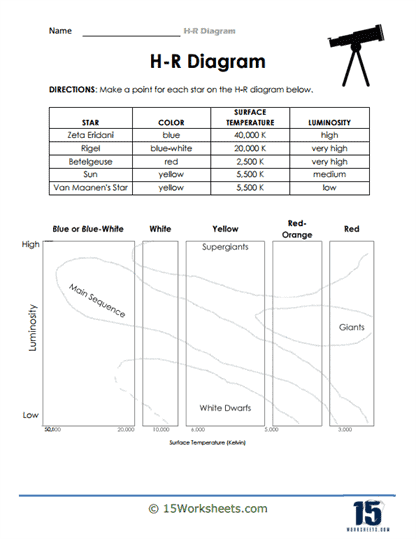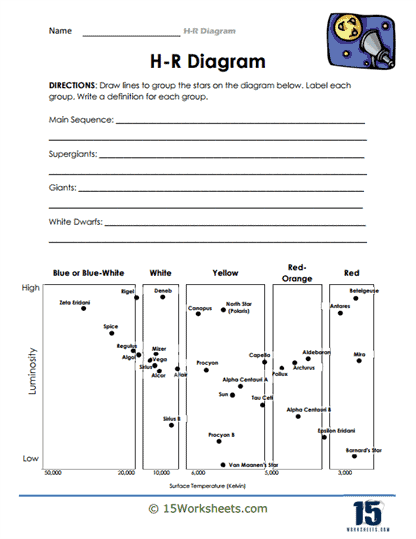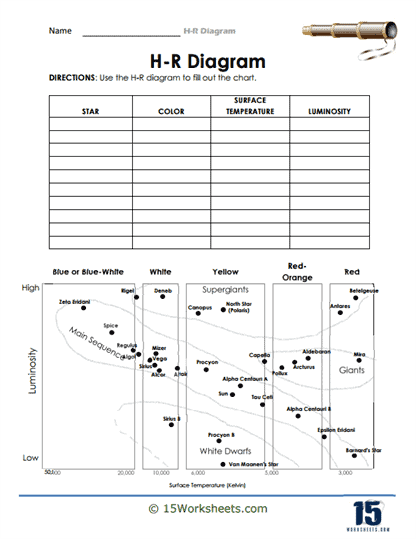H-R Diagram Worksheets
All About These 15 Worksheets
This collection of 15 worksheets is focused on helping students learn about the H-R Diagram or the Hertzsprung-Russell diagram, a tool used in astronomy to understand the life cycle and characteristics of stars. By completing these worksheets, students will:
- Plot stars on an H-R diagram based on their temperature and luminosity;
- Learn and define key vocabulary terms related to the H-R diagram;
- Interpret information from H-R diagrams to answer questions about star characteristics;
- Label different regions and types of stars on an H-R diagram;
- Compare and contrast the relationships between surface temperature and luminosity for different types of stars;
- Identify the different types and colors of stars on an H-R diagram;
- Plot and analyze data for four different stars on an H-R diagram;
- Identify how changes in temperature and brilliance affect a star’s position on the H-R diagram;
- Evaluate the characteristics of different types of stars, including their temperature, luminosity, and life cycle, using the H-R diagram;
- And fill in charts with information about different types of stars based on their position on the H-R diagram.
Through these worksheets, students will develop a deep understanding of the H-R diagram and the characteristics of different types of stars. They will learn how to interpret data from the diagram, make predictions about star evolution, and analyze trends in stellar populations. Additionally, studying the H-R diagram can help students develop critical thinking and problem-solving skills as they apply scientific concepts and principles to real-world phenomena. This knowledge can benefit students by providing them with a foundation for understanding astronomy and the universe around us.
What Are H-R Diagrams?
The Hertzsprung-Russell (H-R) diagram is a scatter plot of stars showing the relationship between their absolute magnitudes (luminosities) and spectral types (or surface temperatures). It is named after its creators, Ejnar Hertzsprung and Henry Norris Russell, who independently developed the diagram in the early 20th century.
H-R diagrams are important tools in astronomy because they allow us to classify stars according to their properties and evolutionary stages. By plotting the data for a large number of stars on an H-R diagram, we can see patterns and trends that provide clues about how stars form, evolve, and ultimately die.
For example, stars that are located in the upper-left corner of the H-R diagram are hot and bright, while stars in the lower-right corner are cool and dim. This tells us that there is a relationship between a star’s temperature and its luminosity. We can also use H-R diagrams to identify different types of stars, such as main-sequence stars (like the Sun), red giants, and white dwarfs.
H-R diagrams are especially useful for studying star clusters, where all the stars have similar ages and compositions. By comparing the positions of stars in a cluster on an H-R diagram with theoretical models of stellar evolution, astronomers can learn a great deal about the physical properties of stars and how they change over time.
In summary, H-R diagrams are a valuable tool in astronomy for studying the properties and evolution of stars. They allow us to classify stars, identify different types of stars, and study the physical processes that govern the behavior of stars.

